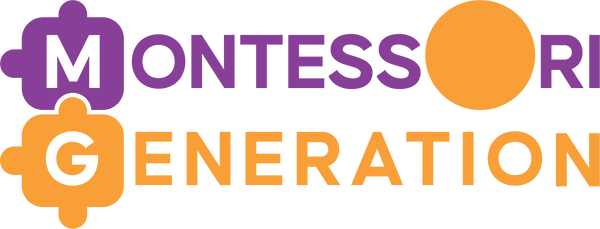Montessori Toys for Early Learning: A Comprehensive Guide
Parenting is a whirlwind! One day, you’re singing songs to your newborn, and in the blink of an eye, they’re off to school. At the center of this adventure, we all cherish memories and time spent with our children, especially during playtime.
Most importantly, we all want to set our mini-humans up for success, and guess what? With the right kind of tools, everything’s possible. Investing in early child development is the key to preparing your little ones for the life ahead.

So, in today’s discussion, we’re going to go over the Montessori toys by age and see how they align with the developmental progress in the early stages of our children.
Principles of Montessori Education
In today’s world, where educational methods for parenting come and go, the Montessori principles for fundamental learning are still present. Namely, Dr. Maria Montessori, the brains behind this approach, believed in nurturing a child's curiosity and independence through a carefully selected set of principles.
2. The multi-age approach: The multi-age approach in the Montessori learning method is designed to include children of all ages. This means that children should play together, as they have so much to give. Older children become ‘’teachers’’ while younger ones look up to their older friends.

In light of everything we said above, these principles aren't just educational strategies - they represent a philosophy that respects the natural pace of a child's development.
Choosing Montessori Toys
In the exciting world of early childhood, picking the right toys isn't just for fun and playing - it's about investing in your child's growth. Montessori toys aren't your usual picks; they're carefully chosen to boost learning, independence, and creativity.

Wondering how to find the perfect Montessori toy for your little one?
Let's make it simple:
Age-appropriate Considerations
Montessori toys are designed to meet the developmental needs of different age groups.
- For infants and babies, consider toys that engage their senses, like soft rattles and textured fabric toys.
- Toddlers, on the other hand, benefit from toys that encourage movement and coordination, such as building blocks and stacking rings.
- Preschoolers thrive with more complex puzzles, art supplies, and activities that promote cognitive development.
Most importantly, providing your child with the right Montessori toy can enable them to go a long way.
Material and Texture
Montessori toys usually use natural stuff like wood, fabric, and even metal. These materials give a sensory-rich feel and link kids to nature. Pick toys with different textures to enhance your child’s sense of touch and encourage deeper exploration.

This is especially important for early development and children who are just stepping into the world of Montessori toys.
Open-ended vs. Closed-ended Toys
Montessori toys foster an approach that encourages children to use their imagination - these are called open-ended toys. They don't have a set use, meaning children can explore these toys and use them the way they want. This encourages creative play and allows children to develop creativity, independence, and cognitive abilities.
On the other hand, closed-ended toys have a specific purpose. These types of toys usually focus on one development field, like cognitive development. One good example of this type is a puzzle, which has a purpose - solve it.
Both these types have their educational purpose and can be found in a Montessori setting.
Montessori Toys for Various Developmental Stages

Specially designed to address cognitive, motor, language, and social-emotional development, Montessori toys provide an educational approach to your child's growth. In that light, let's explore the ideal Montessori toys for each crucial milestone.
- Cognitive development: To spark thinking skills, introduce your child to puzzles, matching games, building blocks, and shape sorters. These toys are quite popular in the early learning stage, where children explore more. Moreover, learning colors and shapes is going to create a strong foundation for problem-solving skills in the future, and Montessori toys are perfect for this.

- Motor skills development: Fine motor skills are usually best practiced with bead threading and lacing toys. On the other hand, balance boards and climbing structures are best for gross motor skills. These activities enhance coordination and movement, promoting physical development.

- Social and emotional development: When it comes to social and emotional skills, the educator/parent has the most influence. However, using Montessori toys like a wooden rainbow or a pulling snail can enhance the playtime and allow the child to bond more with the parent.

Tips for Introducing Montessori Toys
As we already discussed, parents play a big role in the Montessori method of learning. And, by providing your children with the right kind of toys, you also have to introduce them to the concept of the toy as well.

So, here are a couple of tips to ensure you’re child can grow alongside Montessori toys:
Common Mistakes to Avoid
Making mistakes is part of parenting, but it would be best if we, as parents, knew exactly how to come on top when it comes to the education of our children. Therefore, creating a Montessori environment for your child involves more than just selecting toys.

Let’s look at some of the most common pitfalls and try to avoid them.
By avoiding these, you’ll be on the right track to nurture an environment in which the Montessori method shines.
Conclusion:
As we already see, there are plenty of things to look out for when it comes to choosing the best toys for early learning. From nurturing the Montessori principles to carefully considering age-appropriate toys, parents always face some challenges.
Luckily, we’re here to guide you through the world of Montessori toys and explain which ones are the best for early learning. So, why don’t you start here, with us? With a vast selection of toys that focus on child development in the right way, you’ll be able to provide your child with their new playing companion easily.
Free Delivery
Over $80
Easy Returns
No questions asked
Unbeatable Warranty
1-year ++ warranty
- Secure CheckoutWorld’s most secure payment method





